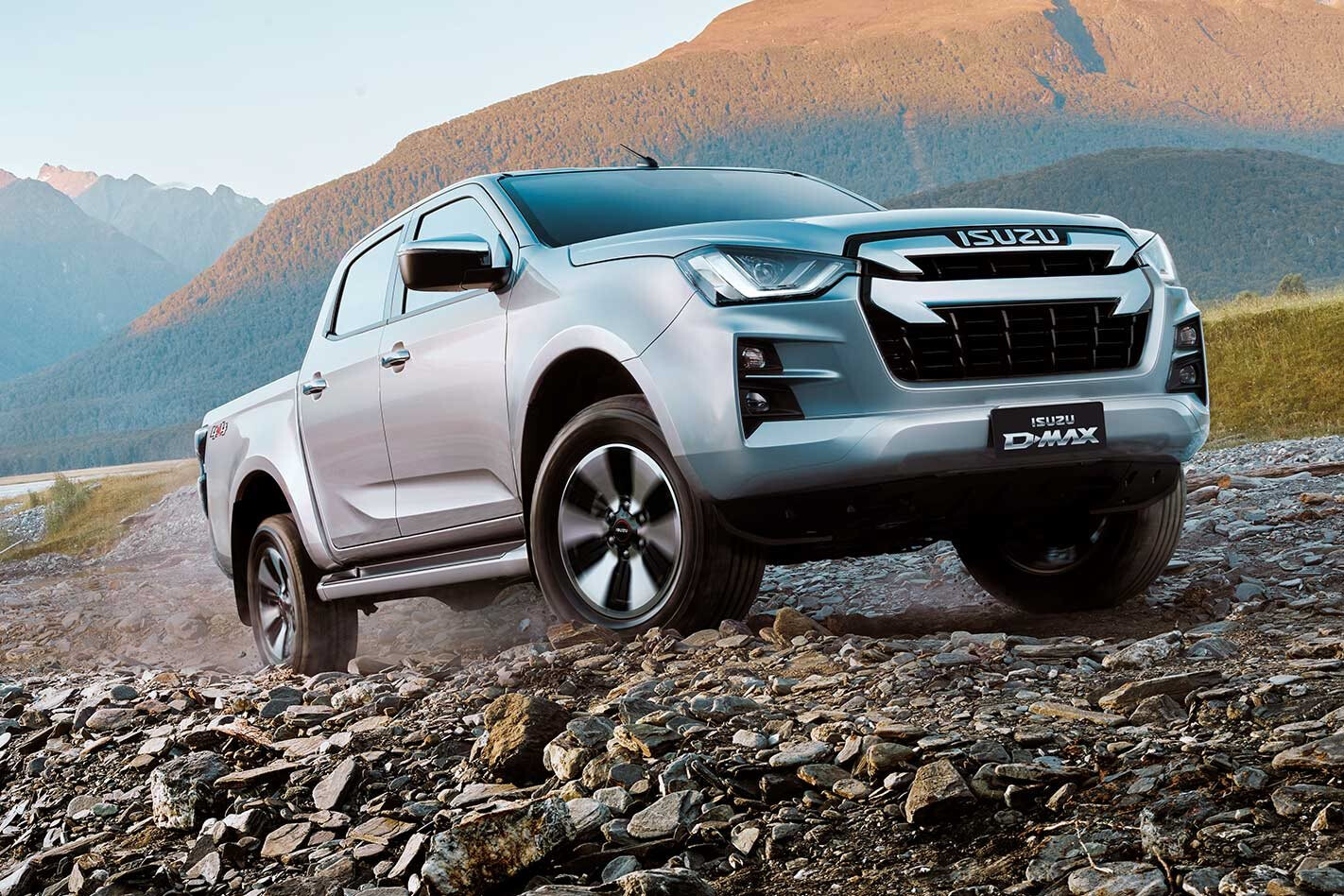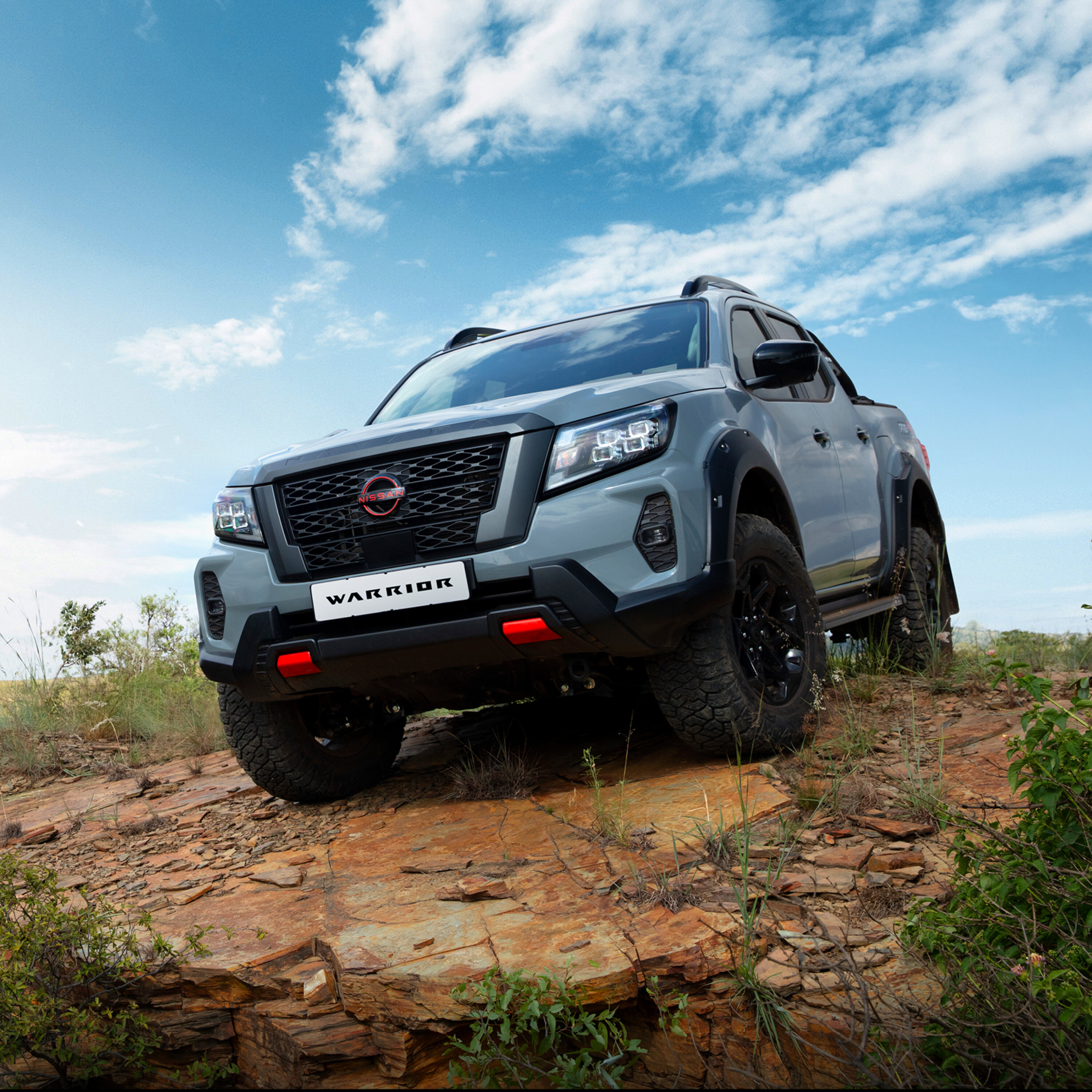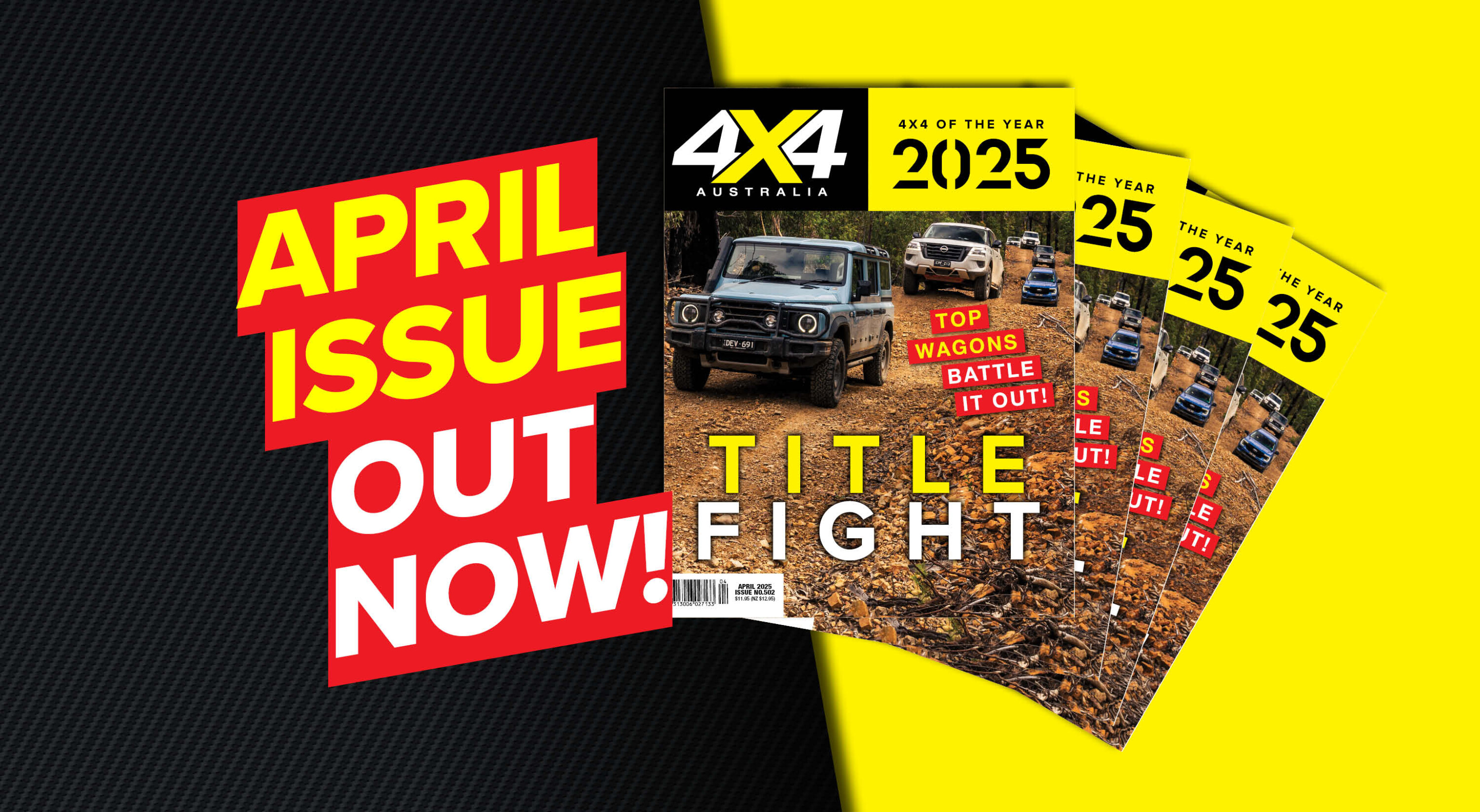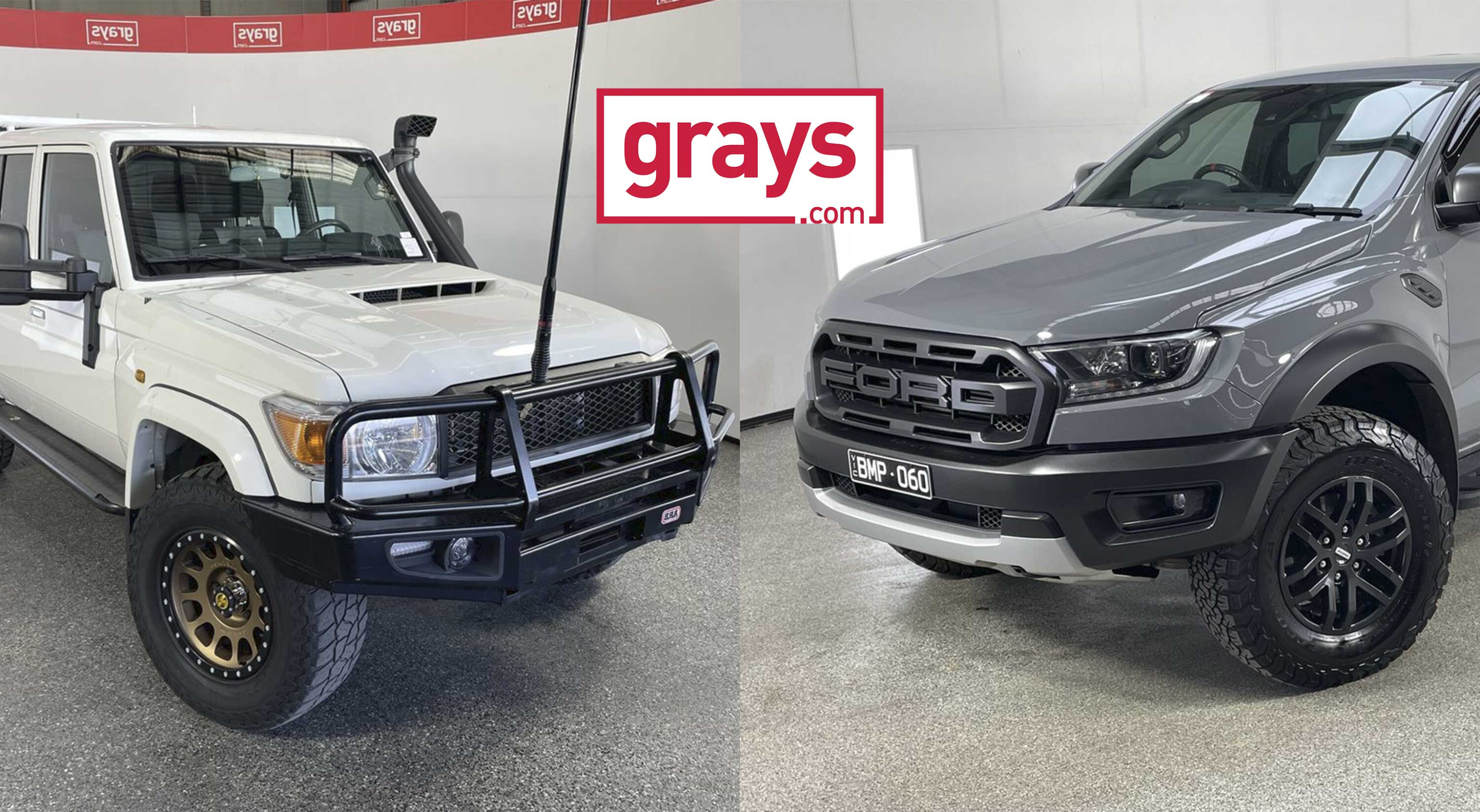ISUZU Ute Australia (IUA) has pulled the covers off its newest D-MAX mid-size ute, which will be on sale in Australia on September 1.
The new third-generation D-MAX represents a step up in style, equipment and price for the well-regarded pick-up, and IUA now see it as a product that will compete head-on with segment leaders’ Ford Ranger and Toyota Hilux.
The new D-MAX lands with a line-up of 20 model variants, taking in two- and four-wheel drive; single-, extra- and double-cab cabin styles; ute and cab-chassis; and four trim levels.
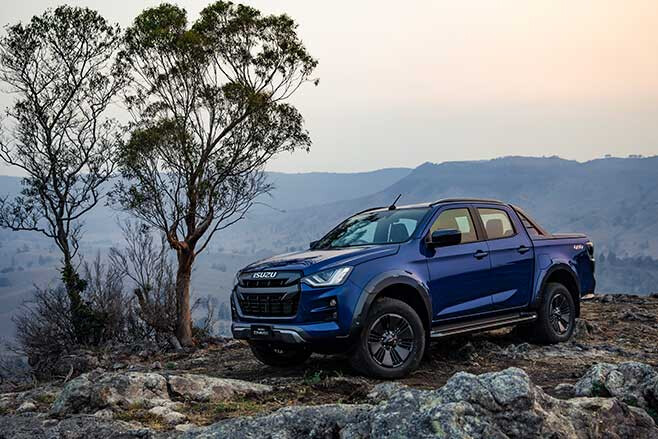
The range starts with the 4×2 Extra-Cab SX ute at $38,900 and runs through to the range-topping X-Terrain Double-Cab ute at $62,900; although, introductory drive-away pricing will get you in to a 4×2 D-MAX Single Cab-Chassis SX manual for $29,990 or $58,990 for an X-Terrain.
Looking at the other top-spec utes in this class and a Ranger Wildtrak lists at $66,290; the most expensive Hilux, the Rogue, is $62,490; a Nissan Navara Warrior is $63,790; and even the outgoing, top-of-the-line D-MAX LS-T is listed at $54,800.
There was no X-Terrain equivalent in the previous D-MAX line-up, but it’s a sizeable step-up in price to play with the top dogs in the game and it will be interesting to see if Isuzu has the bite to match its bark when we drive the new car.
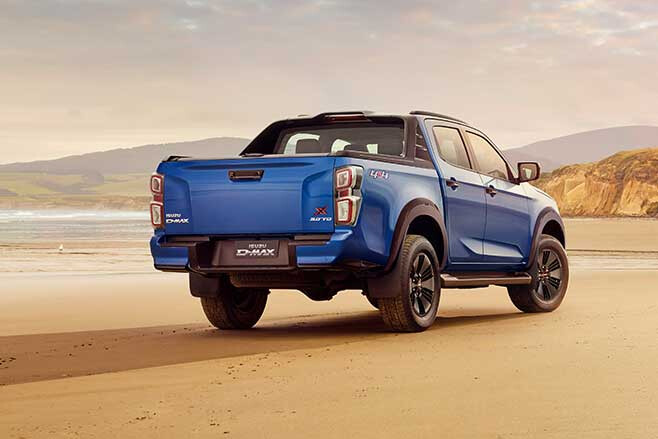
SAFETY FEATURES
Safety is a leading factor in the new D-MAX, with the company claiming it has the most standard safety kit in the segment.
Isuzu’s Intelligent Driver Assistance System (IDAS) is standard across the range and includes eight airbags (double-cab); Autonomous Emergency Braking (AEB); Turn Assist with AEB; Post-Collision Braking; Forward Collision Warning (FCW); Mis-acceleration Mitigation (MAM) (*auto trans only); Adaptive Cruise Control (ACC) (*AT only); Traffic Sign Recognition (TSR); an intelligent speed limiter; Lane Departure Warning (LDW); Lane Departure Prevention (LDP); Lane Keep Assist (LKA) (*AT only); Emergency Lane Keeping (ELK); Driver Attention Assist; Blind Spot Monitoring (BSM); Rear Cross Traffic Alert (RCTA); ABS; electronic stability and traction control; trailer sway control; roll over mitigation; and more.
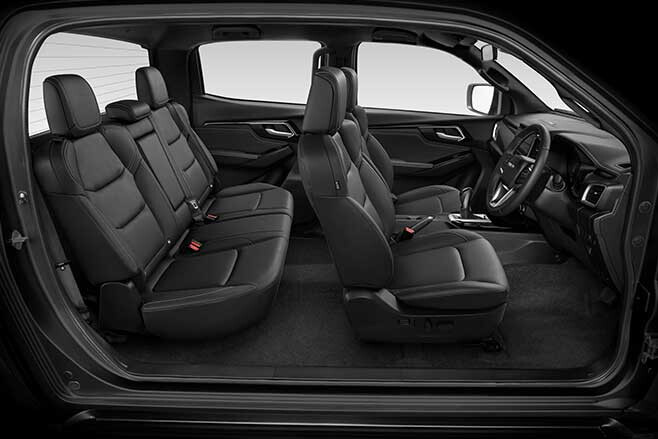
On paper at least, that’s the most safety kit you’ll find in a one-tonne ute. The new D-MAX has yet to be tested for an ANCAP rating but IUA is shooting for the highest available score.
It should be noted that extra-cab D-MAX variants no longer have a rear seat, as this has been dropped to achieve the maximum safety rating; something that wouldn’t be possible with the compromised jump seat.
CHASSIS AND DRIVETRAIN
The D-MAX retains the ladder chassis with a live leaf-sprung rear axle and coil IFS that are standard fare for the class of ute. The drivetrain remains Isuzu’s robust 4JJ 3.0-litre diesel engine backed by either a manual- or auto-shifting six-speed transmission; although, these components have undergone considerable changes.
Extensive use of high strength steel in key areas has reduced weight and increased strength in both the body and chassis, for added safety and improved dynamics. However, any weight savings have been countered by additional levels of standard equipment and noise insulation materials.
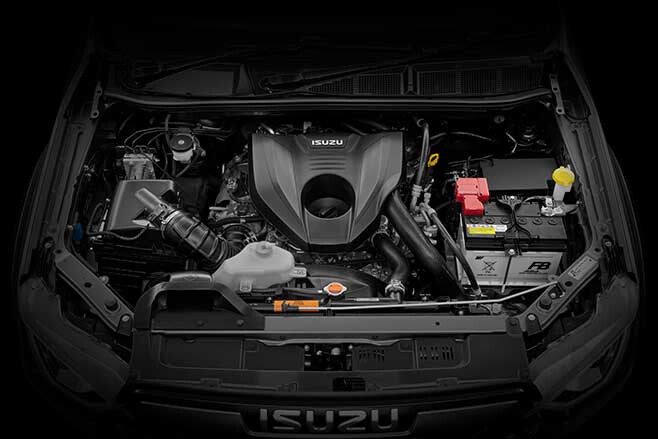
The venerable 4JJ engine has a new block, cylinder head, pistons, fuel injection system and turbocharger, so it is essentially a new powerplant.
Isuzu says these changes make it smoother and quieter to address some of the complaints voiced of the old engine, plus add an extra 10kW and 20Nm to deliver 140kW at 3600rpm and 450Nm from 1400rpm through to 3250rpm.
There has been no significant improvement in fuel consumption due to an increase in overall vehicle weight, although the D-MAX has always been one of the most efficient utes in its class in real-world driving conditions.
Best claimed figure for the new car is 7.7L/100km ranging up to 8.0L/100km, depending on the model and specification.
The six-speed auto is the latest generation of that ‘box by Aisin, while the manual has been updated for improved shifting and feel plus a lift-collar reverse lockout. It now runs behind a new double-mass flywheel that improves drivability and feel.
The D-MAX now has front brake rotors measuring 320mm in diameter by 30mm in width, which IUA claims are the biggest in class, and they are clamped by twin-piston calipers. The rear brakes remain the segment-standard drum units.
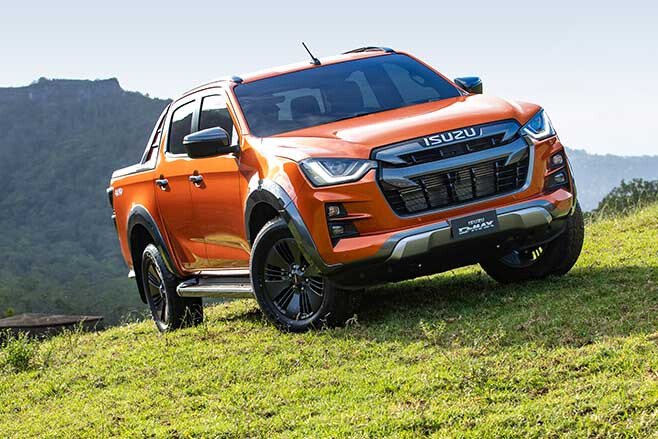
The power steering is now electrically assisted rather than hydraulic, which supports some of the IPAS safety functions that intervene with the steering control when required.
The bigger brake rotors require that 17-inch wheels are now the smallest on offer, with 18-inch alloys fitted to up-spec variants.
Australia is an important market for Isuzu and we are the second biggest market for the D-MAX after Thailand, giving IUA a fair amount of sway in the specifications of the new car.
Central to that is updating and retaining the 4JJ engine while other markets have a smaller 1.9-litre engine, but also adding items like the new standard rear diff lock and increasing wading depth to 800mm on 4×4 models.
OFF-ROAD SPECS
4×4 represents the majority of one-tonne utes sales here, and that’s why 14 of the 20 D-MAX variants are four-wheel drive. Increasing the wading depth required rerouting the engine air intake and high-vented differential breathers, which only happened following input from IUA.
The new D-MAX should be a strong off-road performer with the aforementioned rear diff lock plus increased rear axle travel improving its tractive ability on uneven terrain.
Ground clearance has also improved and is now 240mm on the models on 18-inch wheels and 235mm for those on 17s. Approach, departure and rampover angles now measure at 30.5°, 24.2° and 23.8° respectively, on the 265/60R18-clad X-Terrain.
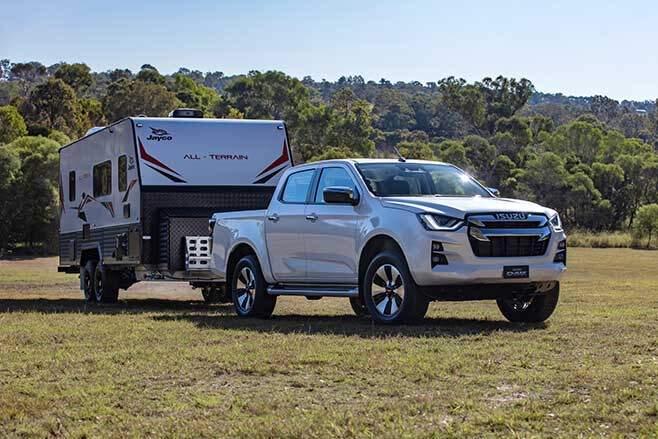
The new D-MAX has a 30mm longer wheelbase than the outgoing model at 3125mm, but with shorter front and rear overhangs it is marginally shorter overall.
All 4×4 D-MAX models bar the X-Terrain double-cab have more than one-tonne payload and 3100kg GVM, while towing capacity remains at 3500kg on a 5950kg GCM. Payload on the fully equipped X-Terrain in 970kg.
From the photos and specs list, the interior of the new D-MAX looks like a step up in terms of features and materials, which it will need to be to justify its price point.
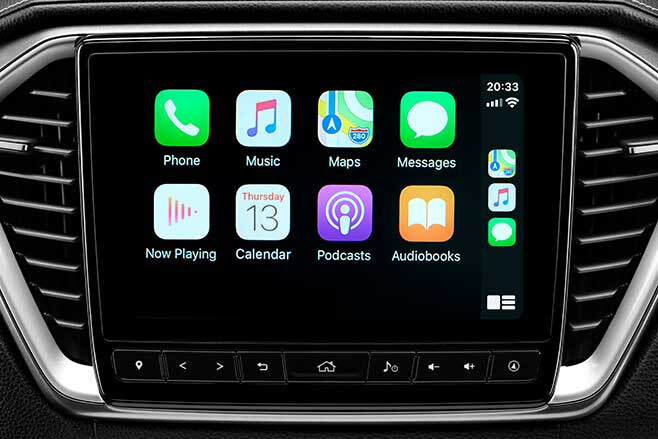
The big nine-inch screen is standard on X-Terrain and LS-U models and will include Apple CarPlay, while the lower grades get a seven-inch unit. The extra wheelbase will hopefully equate to a bigger cabin and IUA tells us it has more space for occupants. We’ll have to wait to get in one to confirm that.
The new car looks the goods and seems to have the kit it will need to step up in popularity and price, but IUA has to be careful here in that it doesn’t want to lose its traditional fan base who has bought the D-MAX on the grounds of reliability, durability, economy and price. We’ll have to wait until we drive it next month to see if it succeeds.
PRICING



